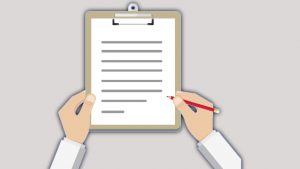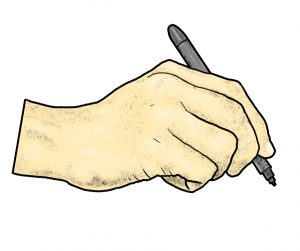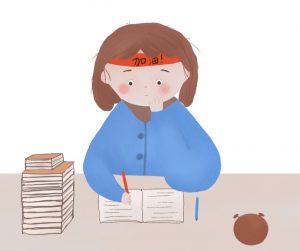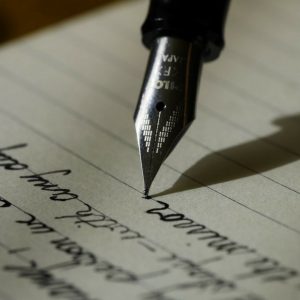Best Note Taking Methods: The majority of us gain the valuable ability of taking notes in school, which we use in all of our meetings, board meetings, and industry conferences. Your capacity to learn and remember knowledge is significantly impacted by the quality of your notes. Finding the ideal note-taking technique may feel like a lengthy and intensely personal endeavor. However, there are effective best practices for taking notes that have been demonstrated to improve memory.
The most effective method for taking notes may vary depending on your learning preferences, the subject matter, and the available time. The technique that will motivate you to acquire and remember knowledge as effectively and efficiently as possible is ultimately the greatest note-taking technique for you. We’ll go through the finest note-taking techniques and how to use them in this guide on note-taking techniques.
Recommended: Differences Between Note taking and note making
Top 7 Most Popular And Best Note Taking Methods
1. The Outline Method: This technique is among the simplest ways to take notes and is utilized for simplicity. This technique is simple to learn and apply for everyone. Choosing four or five main elements that will be taught in a particular lesson is the objective when employing this strategy. You write more in-depth sub-points based on what is being addressed under those main points.

This method of note-taking is intended to save you from being overburdened. But your attention will be focused differently. With this strategy, you won’t be preoccupied with wondering what will be covered next and instead will concentrate on the key elements of the subject at hand.
Apply this technique when:
a. Your notes should be structured from the beginning.
b. To understand the connections between subjects and subtopics.
c. You want to turn the ideas into questions that you can test yourself on later.
Also see: Differences Between Microeconomics And Macroeconomics
2. The Cornell Method: This technique for taking notes was created at Cornell University in the 1950s and is widely used today. In fact, there are similarities between it and the outline approach, which is likely where the inspiration came from.

Even though this approach delves more into the organizing process, crucial aspects are still used. One feature of the page is its division into three parts:
a. the “cue,” which is a little column.
b. a larger column for the notes you actually take
c. a brief overview follows
The cue area is where you include key topics, individuals, prospective test questions, and more. This section is devoted to aiding your memory of more complex subjects and ideas.
These cue points are expanded upon and explained in the remark section. You should still use headers to somewhat describe them. Use a numerical system, such as roman numerals, digits, or letters, and indent as you go into specifics.
The final component you write up is the summary section, which condenses all the material into one or two simple sentences. Given that your notes are where you want all the facts, you want both the summary and the cue to be straightforward.
This method works well if you:
a. Wishing for even more organization and reviewability of notes.
b. Want to rapidly grasp the main concepts and ideas.
Recommended: Differences Between British and American English
3. Mind Mapping Method: The process of mind mapping is effective for issues with overlapping themes or complicated, abstract concepts. Examples of fields where this approach excels include chemistry, history, and philosophy.
The map’s purpose is to show how each issue is connected to the others visually.

Additionally, it enables you to elaborate on specific concepts or subjects. Examining the French Revolution provides an illustration of this in action. You would first begin with that idea at the core and then start spreading out to lead to the occasions and individuals who started the French Revolution.
You may start with broad, basic notions and then add more specific details to those branches later on in the course or while you are reviewing. Dates, facts to back them, and relationships between individuals and events.
However, this approach is not limited to those sorts of subjects. Any issue that may be divided into several points might be helpful. Another example would be to explain several methods of learning and use the nodes to describe each one and what it is like.
This way of taking notes is excellent for:
a. Visual learners who have trouble taking notes on paper.
b. For those who must link connections, events, and subjects in their memories.
4. Flow Notes Method: This technique, is for people who wish to optimize active learning in the classroom and cut down on review time.
Taking flow notes encourages you to think of yourself as a learner rather than verbatim trancribing. To get a general idea out there, you’ll jot down topics in this method, then start drawing arrows, making doodles, diagrams, and graphs.
This approach also aids in building additional connections and bridges within the subject or across different fields. Make a note and scribble it down if certain information makes you think of another piece of information or a method.

The limitation to this approach is that even though works well for learning in the present, it could be stressful to revisit the material subsequently. This approach might be used with one of earlier ones.
Also see: Advantages and Disadvantages of a Monopoly
5. The Sentence Method: A less sophisticated approach that is also straightforward. Simply taking notes is the purpose behind this. As far as you can, you’re taking notes on everything that is said. At its absolute best, this is true transcribing.

It can be difficult to stay on top of everything going on with this approach, which is a concern. You will undoubtedly overlook important details and concepts if you handwrite your notes. You might be able to keep pace when using a computer, but there are still obstacles you could encounter.
Even with those issues, this approach has benefits. This technique offers the greatest information for evaluation and the most specifics when compared to the others: By addressing the important themes, you may keep your speech succinct. Your notes have already been condensed so that you may quickly study and reread them.
6. Charting Method: When taking charting notes, a sheet is divided into three columns using the Cornell technique. This assists you in connecting relationships and data across topics, much to the mind mapping technique.

This strategy is less efficient than the others discussed above, but it works for those who wish to organize data for quick review and emphasize important information on a variety of themes.
Also see: How to prepare for an exam in one week
7. Writing on Slides: The last technique is an alternative for those who don’t want to bother taking in-depth notes. This approach is particularly effective in classes when the teacher assigns slides for the lectures. Simply print them out and begin writing on them, whether they are handouts or can be downloaded online.

This approach is fantastic since it greatly reduces the anxiety associated with taking broad notes. It just needs expansion since thoughts and concepts have previously been explored.
Also see: Most difficult bar examination in the world
Conclusion
The note-taking technique that will motivate you to absorb information as effectively and quickly as possible is ultimately the ideal one for you. This article on note-taking techniques will go through the finest note-taking techniques and how to use them.

Edeh Samuel Chukwuemeka, ACMC, is a lawyer and a certified mediator/conciliator in Nigeria. He is also a developer with knowledge in various programming languages. Samuel is determined to leverage his skills in technology, SEO, and legal practice to revolutionize the legal profession worldwide by creating web and mobile applications that simplify legal research. Sam is also passionate about educating and providing valuable information to people.